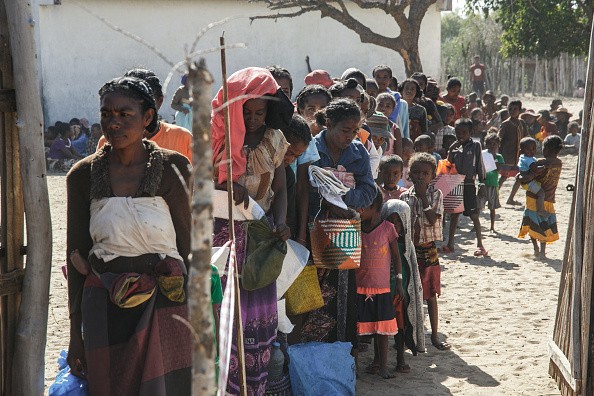There is no food to eat. Nothing to cultivate. May was the month Ifotaka's last rain fell for just two hours.

Famine in Madagascar
Across the extensive southern tip in Madagascar, drought has turned fields into dust bowls. Over one million people are experiencing famine. The countryside is deserted across tens of thousands of land areas. Season of Harvest starts in October, taking long lean weeks before the thin low nutrient crops arrive.
Residents have abandoned some villages. In others, people should be seen in fields working but instead, they are at home wasting away. There's no crop to harvest. Hunger brings both the mind and body of people down. They move gradually and find it difficult to follow a conversation.
60-year-old Helmine Sija who has six children in a village called Atoby said: "I feel sick, and worried. Every day I wonder what we're going to eat."
Residents' Plight
An aged woman with grey hair and a face that is hardened, Sija tends a boiling pot of cactus at the entrance of her house. She cut the pricks off using a machete to get them ready for cooking.
What she's making can't really be referred to as food. The concoction contains little nutritional value, but it's well-known to suppress appetite, even though it leads to stomach aches.
Her first oldest children have gone out in search of job in other towns. She's taking care of the young ones. She said: "I want to move somewhere more fertile, where I can farm. But I don't have enough money to leave."
Around the Ifotaka town, residents said the government brought some rice, beans and oil in August. Out of 500 people selected for financial assistance, about 90 were given the $26.

Malnutrition
Malnutrition is frequent in southern Madagascar. But the currently occurring drought is the worst that has happened in 40 years, as per the United Nations, which holds climate change accountable for the crisis.
Doctors Without Borders has set off a mobile clinic to journey from village to village. Children tightly grip at packs of "plumpy", a peanut butter-flavoured paste meant to aid those that are severely malnourished.
Through the waiting group of people, nurses and helpers picked out the most urgent cases, taking them to the front of the line. Little children are measured in a blue bucket. Their lean arms are wrapped around with measuring tapes, so as to get know how severely malnourished they are.
Families are given a two-week food supply according to the number of children in the family.
Two sisters and one brother in Fenoaivo - all retirees - stayed in a home.
69-year-old Tsafaharie said: "It's been a long time since we grew anything. On good, days, the three of us share a bowl of rice."
For more news, updates about drought, famine and similar topics don't forget to follow Nature World News!
© 2025 NatureWorldNews.com All rights reserved. Do not reproduce without permission.





